The Guinea Pig is a small domesticated rodent from South America. Humans domesticated this species around 5,000 B.C., possibly from the Montane Guinea Pig.
Nowadays, the domestic version, also known as “Cavies,” are a species of their own. They are common household pets, and are very popular because they are docile and affectionate towards humans. Read on to learn about the Guinea Pig.
Description of the Guinea Pig
These are relatively small rodents, with small ears, short legs, and no tail. Most Cavies are about eight or nine inches long, and only weigh a pound or two.
Humans have selectively bred a wide variety of colors and coats. Because of this, these little rodents are brown, than, white, cream, grey, black, orange, and any combination of the above. Some have short coats, while others have long coats, or even curly coats.
Interesting Facts About the Guinea Pig
These popular pets are undoubtedly cute. However, as is the case with any pet, you should do your research before adding a new member to the family. Learn more about Guinea Pigs below.
- Never-ending Gnawing – Like all rodents, Guinea Pigs’ teeth keep growing for their entire lives. Because of this, these rodents must have plenty of things to gnaw on and grind down their teeth. If they do not grind down their teeth, their teeth can grow too long for them to eat and they can starve.
- Not From Guinea – Despite their name, these creatures are not from Guinea. In fact, scientists still are not entirely sure where the “guinea” in their name even came from! The ancestors of these rodents actually come from the Andes Mountains in South America.
- Not a Pig – Just like the other half of their name, the “pig” in Guinea Pig is also a bit of a misnomer. As rodents, these fuzzy pets are not closely related to pigs at all! They got their name from their squeaking, squealing, pig-like vocalizations.
- Social Squeakers – In fact, Cavies produce a wide variety of noises. These social little creatures call to one another with a variety of squeaks, wheeks, purrs, and more. Different noises are associated with different behaviors or emotions.
Habitat of the Guinea Pig
Though these creatures do not live in the wild, their most recent ancestor lives in mountainous grasslands and meadows. Unlike many other rodents, they do not dig burrows or tunnels, but instead hide in rocky crevices and beneath vegetation.
Nowadays, most domestic Guinea Pigs live in cages with soft bedding on the bottom and plenty of artificial hiding places. You should only keep your pet on a solid floor, as wire floors can cause foot injuries. You should also use aspen, corncob, paper, or similar rodent-safe choices for their bedding. Both cedar and pine shavings are potentially dangerous to these animals.
Distribution of the Guinea Pig
These little rodents live in households worldwide as companion animals. Across South America, humans breed domestic Guinea Pigs for their meat as well. They do not live in the wild, but their closest living ancestors inhabit the Andes Mountains in South America. They live throughout Peru, Argentina, and Chile in this habitat.
Diet of the Guinea Pig
As herbivores, these rodents feed only on plants and plant materials. They rely on their owners to provide a balanced diet to keep them healthy. Pelleted feed is an important component of their diet, as it provides them with all the vitamins and nutrients they need to stay healthy. They also eat fruit, lettuce, hay, and other safe veggies.
Guinea Pig and Human Interaction
These cuddly little creatures are usually very sociable and friendly towards people. When interacting with them, it is important to always handle them gently, speak softly, and keep a close eye on children or pets. By carefully socializing your new friend, you can make sure your Guinea Pig is happy and comfortable when handled.
Domestication
Humans began to domesticate these animals for food in South America about 7,000 years ago. Local tribes selectively bred them for easy handling and meat production.
From there, various cultures began raising, breeding, and interacting with Guinea Pigs. In some cultures, people gave them as gifts, viewed them as sacred, or used them in ceremonies. Traders began taking them to other areas of the world in the 1500s.
Does the Guinea Pig Make a Good Pet
Yes, Guinea Pigs make wonderful pets. Before purchasing one, it is important to do your research and understand all their needs. They are small, fragile animals, and might not be the right choice for families with young children.
Guinea Pig Care
There are several factors that you must address to keep your Guinea Pig healthy and happy. First, their enclosure must be large enough for them to roam and explore. This is especially important if you have more than one.
This leads to our second factor – social behavior. These are social creatures, and should not live alone. Finally, your new friend needs a balanced diet of pelleted food, fresh veggies and greens, fresh water, and hay.
Behavior of the Guinea Pig
These little mammals live in small groups, each of which has a special social structure. They are most active in the morning and late afternoon, which makes them crepuscular.
Like many creatures, they do sometimes fight amongst themselves, usually to establish dominance. While males can live together, they can become very aggressive when fighting over females.
Reproduction of the Guinea Pig
Because they do not live in the wild, humans control the vast majority of breeding situations for these rodents. Males and females that live in the same enclosure will often mate.
Their gestation period is about two months long, and most females give birth to an average of three babies, known as “pups.” The female weans the pups off of milk when they are two or three weeks old. The pups can reproduce themselves when they are about two months old.
Beliefs, Superstitions, and Phobias About the Guinea Pig
See “Domestication” above.

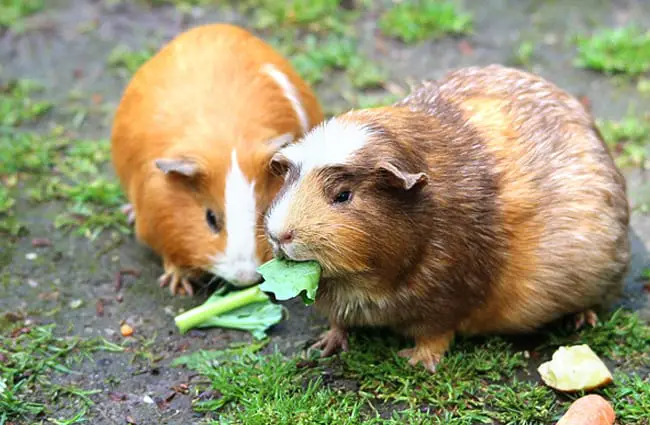
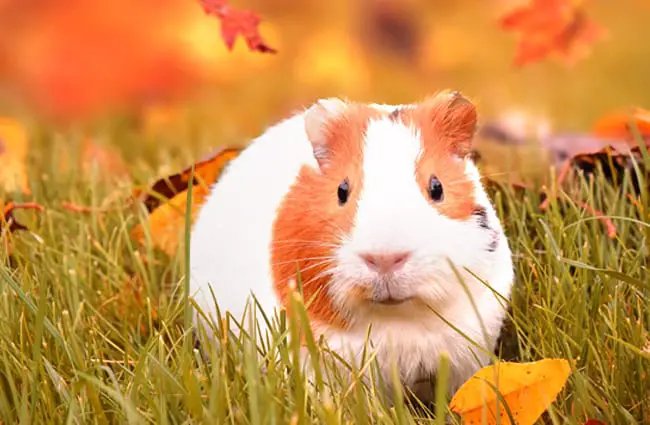
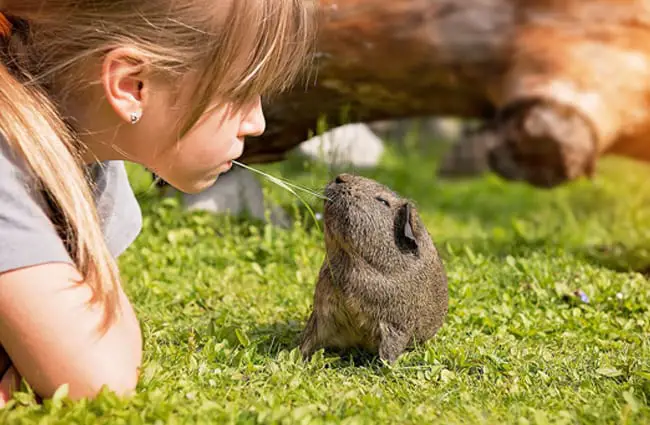
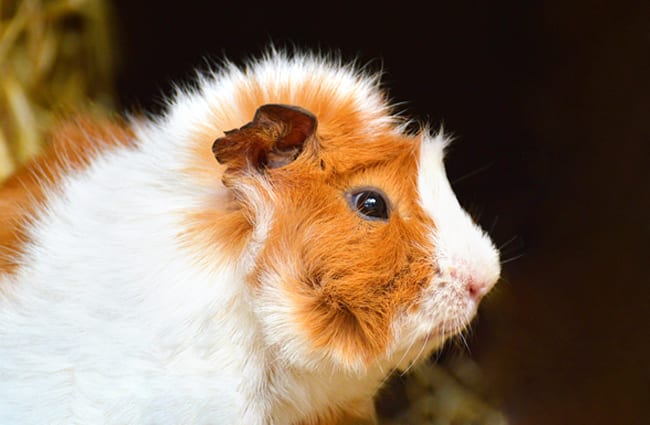
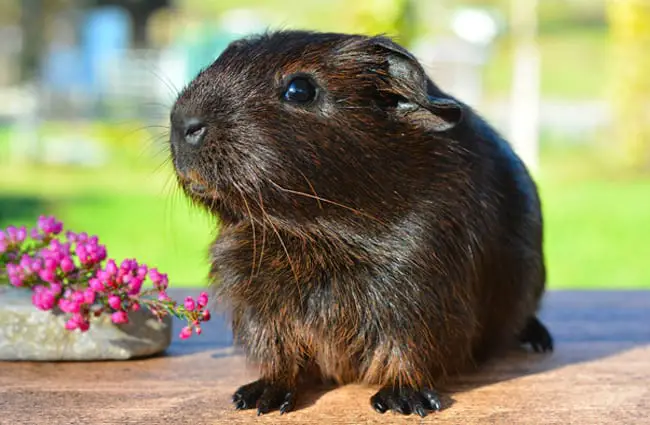
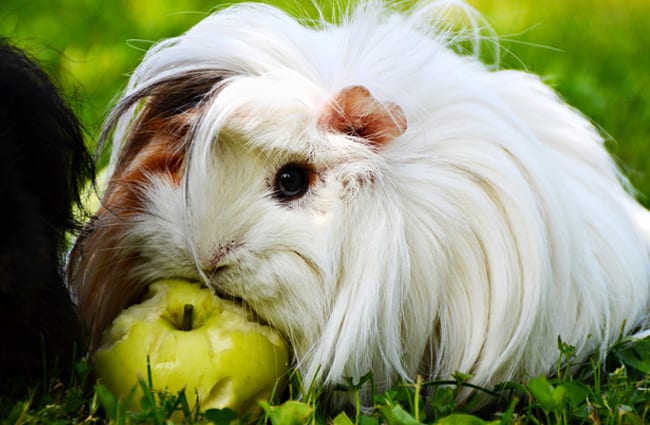
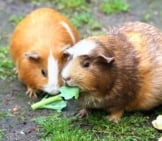
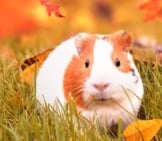
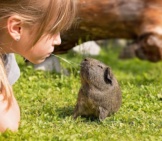
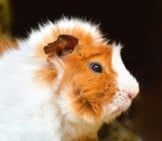

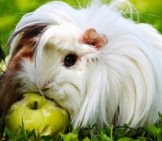
![Red Angus Closeup of a beautiful Red Angus cowPhoto by: U.S. Department of Agriculture [pubic domain]https://creativecommons.org/licenses/by/2.0/](https://animals.net/wp-content/uploads/2020/03/Red-Angus-4-238x178.jpg)












![Red Angus Closeup of a beautiful Red Angus cowPhoto by: U.S. Department of Agriculture [pubic domain]https://creativecommons.org/licenses/by/2.0/](https://animals.net/wp-content/uploads/2020/03/Red-Angus-4-100x75.jpg)

